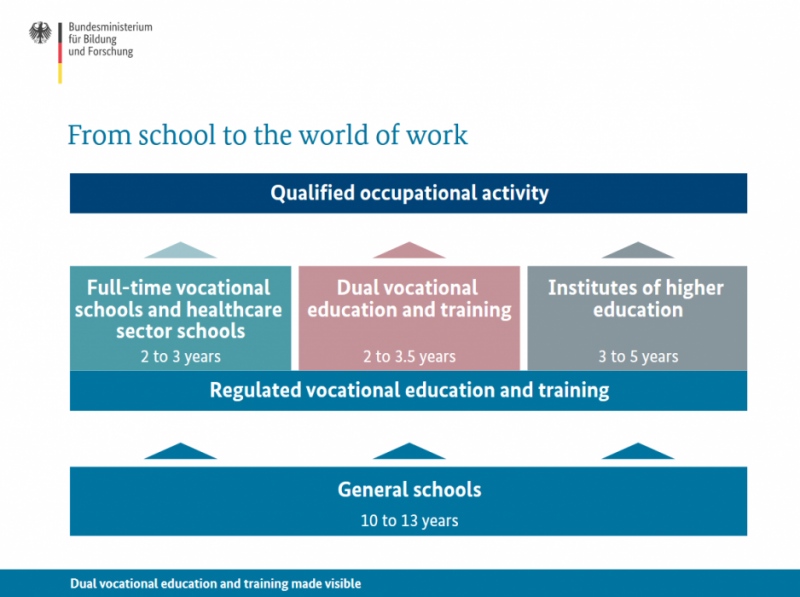How Germany’s Vocational Education and Training system works
Germany’s dual-track vocational training program, known as the VET, is the route that around half a million apprentices in Germany take to a skilled profession every year. (There are a total of about 1.3 million apprentices training every year in Germany.)
The dual-track VET’s two components are: classroom study in specialised trade schools and supervised, on-the-job work experience. Over the course of two to four years, apprentices spend a couple of days a week, or even blocks of several weeks at a time, at a vocational school (Berufsschule) where they obtain theoretical knowledge for their occupation of choice. (Classes also include German, English, and social studies.) At the same time, a company or public sector institution hosts the apprentices where they gain practical knowledge and hands-on experience. The novices usually spend 60 percent of their time in the workplace under supervision of a certified trainer, and 40 percent in the classroom.
The Federal Institute for Vocational Education and Training (BIBB) stresses that the dual system "is definitely at the heart of the German VET system," it does not cover all of its relevant aspects. The institute has put together a detailed explanation of the system's different aspects on its website.
More than one-third of all pupils graduating from secondary school in Germany enter a vocational training program, of which one-third go on to pursue a single-track, school-based VET and two-thirds the dual-track counterpart. Approximately 68 percent of the latter system’s graduates enter the workforce in the company where they were trained immediately after training.
Every year there are more than 500,000 apprenticeship positions available across all sectors of the economy and public administration.
The VET boasts roughly 330 officially recognised training programs, all listed on Planet-Beruf.net. The Federal Institute for Vocational Education and Training (BIBB) publishes a list of occupations and respective salaries that apprentices receive, as well as the guide “Vocational Training in Germany.”
The host companies’ pay apprentices a monthly salary, which averages nearly €800. The sum increases every year of the apprenticeship.
About 51 percent of Germany’s workers are skilled workers trained in the VET. A further 11 percent of workers are master craftsmen, and vocational and technical college graduates. They are also part of the VET but not of the dual-track system. In order to enter the advanced training, one must have Berufsschule certification and several years of additional work experience. The technicians-in-training study at technical colleges (Fachschule) for two years and graduate upon passage of an examination.
Germany’s vocational schools partner with around 430,000 companies, and more than 80 percent of large companies hire apprentices.
According to an Association of German Chambers of Commerce and Industry (DIHK) survey, 516,200 people started apprenticeships in 2015. But this left many positions unfilled. Nearly a third of businesses surveyed were unable to recruit sufficient qualified applicants for their open trainee positions. In eastern Germany, the figure was 45 percent.
[Also read the CLEW article Germany’s vaunted vocational training programme strains to meet Energiewende’s demand for skilled workers]


